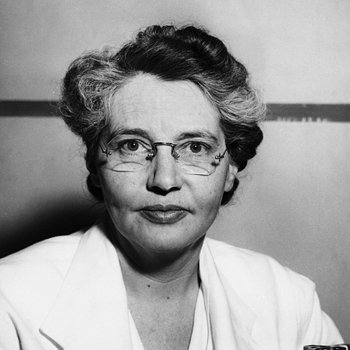Women in science have never had it easy. But despite the discrimination and lack of recognition these women faced, their hard work led to groundbreaking scientific discoveries. Today, those discoveries have saved many lives, and it’s all thanks to these ladies in STEM. These role models should be inspirations to us all in the moments that we don’t believe in ourselves. Today, we want to say their names as much as possible and share the stories that blazed new trails in different science fields.
1. Alice Ball
Born in 1892, chemist Alice Ball was the first African American to get a master’s from the University of Hawaii. She was also the first female chemistry professor that the University of Hawaii ever hired. Sat the young age of 23, she developed the first treatment for leprosy, which previously had a very low percentage of recovery. She developed an easily injectable form of chaulmoogra oil, saving many lives. Unfortunately, she passed away before she could get the credit she deserved, and her own supervisor at the university tried to claim her research as his. However, in the 21st century, her achievements are now fully recognized.

2. Gerty Cori
Hailing from the Czech Republic, Gerty and her husband immigrated to the US in 1922. When they got there, they started medical research and discovered the Cori cycle. This cycle demonstrates how the body uses chemical reactions to turn the carbs in muscle tissue into lactic acid and remetabolizes it. The couple discovered the catalyst known as the Cori ester. Gerty also studied glycogen storage disease on her own and became the first person to show that enzyme defects can cause diseases in humans. In 1947, it earned her a Nobel Prize alongside her husband, making her the first woman to win the award in the medicine category.

3. Rosalind Franklin
Rosalind Franklin was an expert in the field of X-ray crystallography, and her research was the first to discover the dimensions of DNA strands as one molecule in two matching parts and opposite directions. However, her data was used by male scientists to make it appear like they discovered her first, and many people today agree that Rosalind should have been awarded a Nobel Prize along with her male colleagues. She passed in 1958, four years before it was awarded.

4. Barbara McClintock
This American geneticist got her start at Cornell in 1921, where she discovered her love for genetics.27 years later, in 1948, she discovered that parts of the genetic code in maize could change positions on chromosomes, which nobody had unearthed before. Other scientists were hostile to this discovery and many didn’t believe her. Despite continuing her research, she stopped publishing research papers in 1953. However, in the late 1960s, professionals in her field realized how significant her research was, and she became the only woman to win her own Nobel Prize in Physiology or Medicine in 1983. Despite making such an iconic achievement, she said her greatest joy was discovering a secret that only she knew.

5. Helen Taussig
Hellen Taussig was deaf, severely dyslexic and faced gender discrimination, but she didn’t let that stop her and her amazing work. In 1927, she got her medical degree from John Hopkins and made groundbreaking discoveries in the field of pediatric cardiology. She discovered the cause of a birth defect known as “blue baby syndrome,” which has a high mortality rate for infants. After developing the procedure to fix it, she worked with her colleagues at John Hopkins, working on a now-successful technique that has saved thousands of babies. She continued research until the day she passed away at 87 years old.

6. Rachel Carson
We have American marine biologist Rachel Carson to thank for her work “Silent Spring” which exposed the dangers of using too many synthetic pesticides. Carson was also partially responsible for the contemporary environmental movement today. When her work was released, she stood strong in the face of criticism from the chemical industry. At the same time, she was battling breast cancer. But even after Carson passed away, her famous book got the public more interested in environmental issues, along with public health, and as a result, Nixon formed the EPA, or Environmental Protection Agency, a few years after.

7. Tu Youyou
In the 1970s, this pharmaceutical chemist discovered a new malaria treatment and saved millions. With a background in herbal and traditional Chinese medicine, she discovered the use of sweet wormwood as a treatment for intermittent fevers, which commonly occur with malaria. In her research, she discovered a substance called artemisinin, which inhibits malaria. Youyou even offered to be the first human to test the substance. Today, she’s the chief scientist at the China Academy of Traditional Chinese Medicine, and won the 2015 Nobel Prize in Physiology or Medicine for her research.

8. Jane Goodall
Still working today, Jane Goodall was one of the first female scientists to get down and dirty with fieldwork. The British primatologist is the world’s top expert on chimpanzees due to her 55-year-long time studying the wild chips in Tanzania’s Gomber Stream National Park. She was the first person to discover how chimps create and use tools. Previously, research indicated that humans were the only ones to do this, but Goodall proved them wrong she watched them fishing for termites with uniquely prepped sticks.
